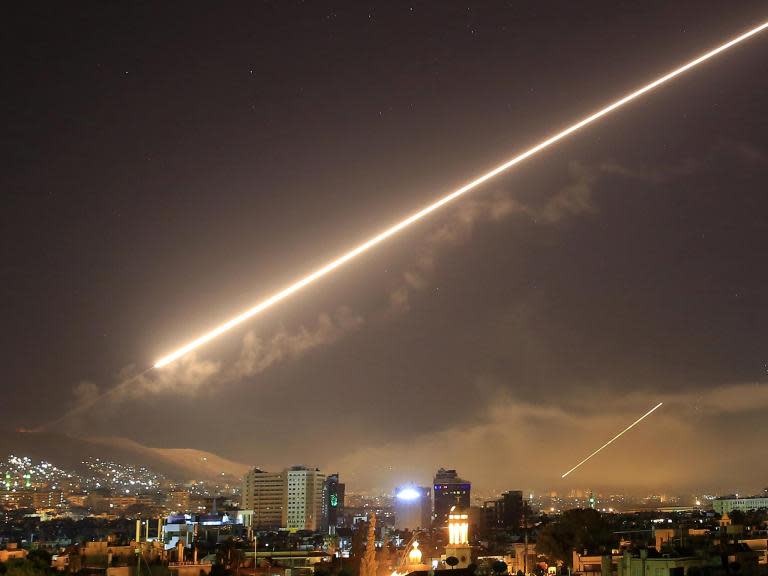Syria airstrikes 'had limited impact' on Assad's ability to launch chemical attacks, despite Trump claims
US, British and French missile strikes on Syria had a limited impact on Syrian president Bashar al-Assad’s ability to carry out chemical weapons attacks, US assessments have reportedly shown.
Donald Trump tweeted “Mission Accomplished” after the attacks, which members of his administration claimed had struck the heart of the country’s chemical weapons programme.
His comments echoed those made by his predecessor George W Bush in 2001 after the US ousted Iraqi dictator Saddam Hussein.
The US, Britain and France destroyed three targets tied to Syria’s weapons programme, the most important of which was the Barzah Research and Development Centre.
US intelligence concluded it was involved in the production and testing of chemical and biological warfare technology.
But four US officials told Reuters that currently available intelligence indicated Syria’s stockpiles of chemicals and precursors were believed to be scattered far beyond those three targets.
It suggested that some of it was stored in schools and civilian apartment buildings, which one of the officials referred to as “human shields”.
Speaking to Congress a day before the strikes, the US defence secretary James Mattis acknowledged one of his top priorities in crafting the operation would be to minimise the loss of life to civilians.
Both the Syrian regime and Russia deny unleashing poison gas on 7 April during their offensive on Douma, which ended with the recapture of the town, that was the last rebel stronghold near the capital, Damascus.
Attempts to investigate were thwarted and when a UN security team visited the site of the suspected attack earlier this week, they were fired on by assailants, forcing them to retreat and further delaying the fact-finding mission by experts from the international chemical weapons watchdog.
US officials said the assessment showed the strikes, particularly on Barzah, did degrade Syria’s chemical weapons capability.
But it also indicated a large quantity of chemical weapons was stored elsewhere.
While crude, it “is about as good as it needs to be for Assad’s purposes”, another official said.
Chlorine, which the US assessed was used in the Douma attack, is a common industrial chemical that is not difficult to find or weaponise, experts say.
As a result, crippling a chlorine capability through military strikes is far more difficult than eliminating more sophisticated chemical or biological warfare agents.
Moved by the images of the civilian victims of the suspected chemical attack, Mr Trump made no secret he was convinced of the need for a powerful US response.
He even put Moscow and Tehran, which back the Assad regime, on edge with fiery rhetoric in the days before the strike, leaving open the possibility he might target them too.
But US officials familiar with US military planning told Reuters that Russia and Iran were never seriously considered as targets.
Beyond working to avoid civilian casualties, Mr Mattis and other US officials tailored the strikes in a way to avoid triggering retaliation from Moscow and Tehran.
The end result was an operation that did not target the Syrian regime’s conventional military infrastructure, including aircraft that could deliver chemical agents in the future.
The revelations came ahead of a meeting between the head of Russia’s military general staff and Nato’s supreme allied commander.
Valery Gerasimov and Curtis Scaparrotti are set to meet in Azerbaijan to discuss the situation in Syria, according to the Tass news agency, which cited the Russian defence ministry.
The talks are also expected to touch on Nato and Russian military activity in Europe, Tass added.
Meanwhile, Isis militants have been give 48 hours to agree to withdraw from their last bastion in the capital, Damascus.
Syrian troops and allied Palestinian fighters are massing around the Yarmouk refugee camp, which Isis seized in 2015 after months of heavy fighting.
The extremists have been driven from nearly all the territory they once controlled in Syria and Iraq.
Additional reporting by agencies

 Yahoo News
Yahoo News 

